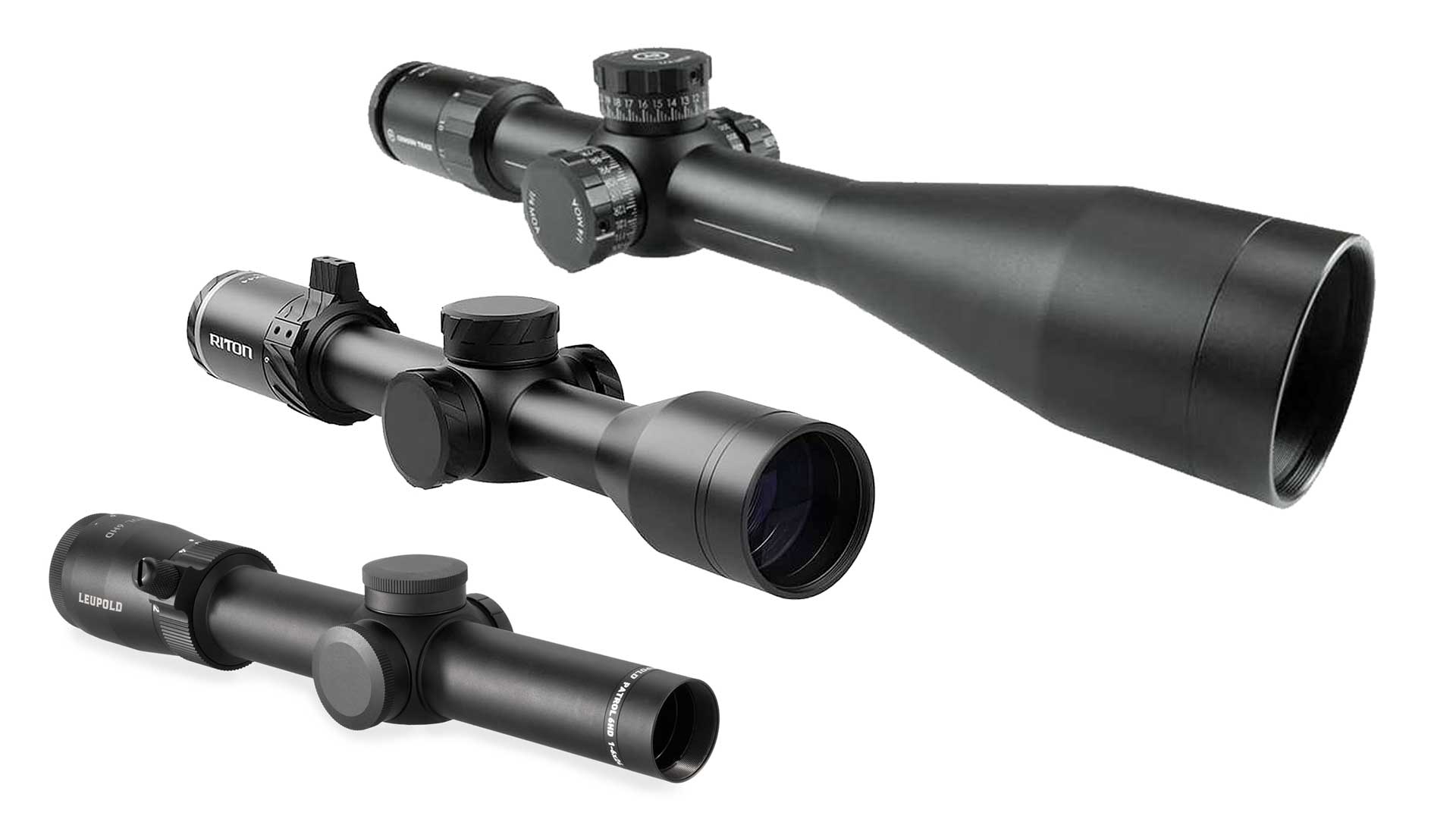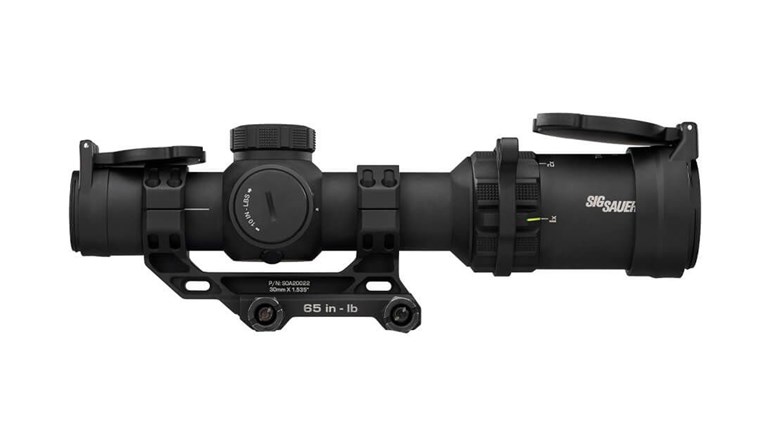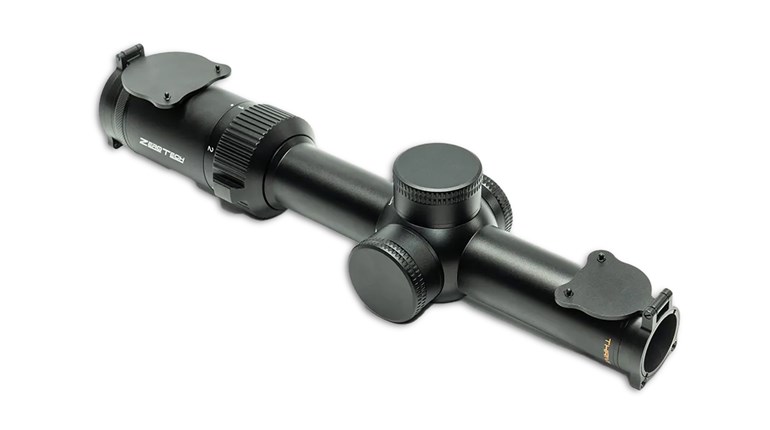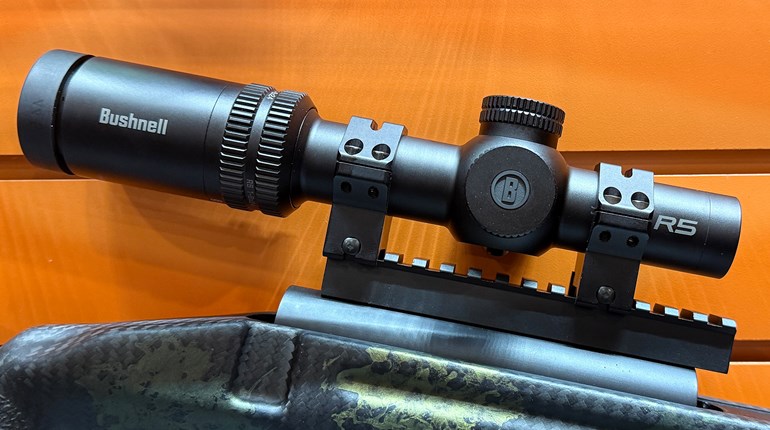
Both sides of this argument come up remarkably regularly. On one hand we have the bellicose old timer proclaiming that if you can’t do it with a fixed 4x (or 6x) optic, it does not need to be done with a rifle. On the other hand, there is always someone out there whose scope is permanently set on 32x, day or night.
These are, of course, exaggerated examples, but the arguments really happen and for real reason. We have a tendency to overscope our rifles with high magnification optics, which is one kind of an extreme. The opposite extreme is when you think there is never a good reason to put a high magnification scope on a rifle. I have been in both situations out in the field where I was wishing for less power and wishing for more.
 The truth is that we usually think about the magnification range in a somewhat bass-ackwards way. Most discussions I see center on whether a particular scope gives you enough magnification on the high end. Very few address whether there is too much magnification on the low end and almost none pay any attention to other objective and subjective metrics of riflescope performance that are impacted by the choice of the magnification range. Equally importantly, there is a lot of talk about matching the magnification range of a riflescope to the rifle it is on. A better way of thinking about it is that both the rifle and the scope have to match the application, more so than each other. For example, here is a $6400 riflescope on a $500 Tikka T1x (albeit sitting in a nice XLR chassis). On paper, it would seem that I am patently crazy to put this expensive scope on this rifle. In practice, I tend to shoot extremely tiny and rather distant targets with this wonderfully accurate rimfire rifle and I need all the optical performance I can get for it. Even more importantly, I almost never need to shoot it on low magnification, so 7x on the bottom end is more than sufficient.
The truth is that we usually think about the magnification range in a somewhat bass-ackwards way. Most discussions I see center on whether a particular scope gives you enough magnification on the high end. Very few address whether there is too much magnification on the low end and almost none pay any attention to other objective and subjective metrics of riflescope performance that are impacted by the choice of the magnification range. Equally importantly, there is a lot of talk about matching the magnification range of a riflescope to the rifle it is on. A better way of thinking about it is that both the rifle and the scope have to match the application, more so than each other. For example, here is a $6400 riflescope on a $500 Tikka T1x (albeit sitting in a nice XLR chassis). On paper, it would seem that I am patently crazy to put this expensive scope on this rifle. In practice, I tend to shoot extremely tiny and rather distant targets with this wonderfully accurate rimfire rifle and I need all the optical performance I can get for it. Even more importantly, I almost never need to shoot it on low magnification, so 7x on the bottom end is more than sufficient.
Before we get into the details, keep in mind that the usual stochastic analysis we all do is often difficult to apply to riflescopes. "Stochastic" is a nerdy way of saying that all the different properties we look at are randomly distributed and independent from each other. We all tend to view things in this same way, usually subconsciously. It is a very powerful analysis tool that is applicable to a surprisingly broad range of real-life problems. Unfortunately, to apply it to riflescopes, we would have to know very fundamental characteristics buried deep inside the optomechanical design. The criteria that we see in the spec sheet and with our own eyes when evaluating riflescopes are almost invariably interconnected with each other. All these interdependencies complicate decision-making.
In this case, we will mostly look at magnification range, objective diameter, size/weight and exit pupil/eye relief/eyebox.
Depending on what you are looking to do, all of these carry different weights. However, the best way to start is with how low of a magnification you need. For example, for many years, a 3-9x42 riflescope was the default general purpose configuration for hunting. It was the right choice because 3x on the low end gives you a good enough FOV (Field of View) for close-up shots and is easy enough to use for offhand shooting. In the fixed magnification era of riflescopes, the most common choices were 4x and 6x. A 3-9x42 scope gave you a useful improvement over those. As higher erector ratios became more common, a general-purpose configuration became 3-15x42 or 3-15x50. It is, again, a useful improvement in performance, but note that 3x on the low end did not budge. The fundamental considerations of FOV and apparent stability have not changed.
On the opposite side of the magnification range, other priorities are in play. Hunting has changed, and precision shooting disciplines are increasingly popular. The advent of tactical applications from CQB out to mid-range created a whole new generation of low-to-mid power scopes. More and more people practice at longer distances where moderate magnification can go a long way. Interestingly, a lot of the time, a lot of magnification can't go quite as far. There are two reasons for that: eyebox and atmospherics. Starting with the latter, the higher the magnification, the more air quality becomes important. The highest magnification designs are most useful when shooting at targets located at known distances. Shorter distance benchrest disciplines are a good example. Even at longer ranges, like those found in F-Class rifle competitions where the target size and location are precisely known, very high magnifications are useful. In fact, F-Class competitors often use 40x exclusively on their rifles. Outside of that, the more air you are looking through the harder it is to use high magnification. At an ELR shoot, it is not uncommon to see 7-35x scopes on rifles which never venture above 16x.
5-25x56 or similar configurations ruled the roost for unknown distance/unknown target precision shooting. In the last few years, however, we see a significant number of 6-36x and 7-35x riflescopes become popular. Why? At some point, people realized that there is no compelling reason to go below 8x during most PRS/NRL competitions. In that case, there is really no downside to stepping up in magnification. While you might not be using that 35x very often, there is no harm in having it there for use because after all, there is no low magnification penalty. Military applications often have specific low magnification requirements because of the use of clip-on low-light optics, but those are irrelevant for most civilian precision competitions.
Naturally, if you are looking for crossover use where you want the scope to pull double duty for both hunting and precision use, low magnification considerations are in play again and having 5x on the low end is usually a lot more important than having 35x on the high end.
It all makes sense so far, I hope, which means it is time to throw a fly in the ointment. That fly is something called “eyebox”. It is not a very good term to use, but we do not really have a better one.
If the word “eyebox” brings up images of a wooden box with a bunch of glass eyes in it, you are not alone. In the shooting world, however, the term came to signify the flexibility of eye relief. Once you establish the absolute best position for your eye behind the scope, you have some latitude for how far away from that your eye pupil can venture and still see the image through the scope.
Eyerelief flexibility is not independent of other performance parameters of a riflescope. Eyebox gets noticeably tighter on higher magnifications as the exit pupil gets smaller. All else being equal, eyebox is usually tighter on riflescopes with wide FOV (Field Of View). That becomes an interesting compromise since we do not want to give up too much FOV. If you are trying to locate something through the scope, you need that FOV. I’ve seen outwardly similar riflescopes where the FOV on 4.5x was larger than the FOV of a competing model on 3.7x. If you get same FOV with higher magnification, it is easier to see… unless the eyebox is so tight you can’t get a good image half the time. Everything is a compromise and there is no good substitute to personal experience when figuring out what matters to you. While we can usually figure out the exit pupil from looking at the spec table, it is only one contributor to eyebox. Same for the field of view. Variations in the eyepiece design make a big difference and there is no good way to figure those out without actually getting your hands on the scope. Your riflescope can have the highest magnification in the world, but if you can’t use it does nothing for you. There have been some interesting developments with eyebox optimization in modern designs. For example, Vortex Razor Gen3 6-36x56 has somehow managed to keep very forgiving eyebox without throttling down FOV. Chances are we will se continuous improvements in this regard as new models are released.
For the time being, unless you only shoot from the bench, eyebox becomes the limiting factor for how useful high magnification really is. If you want to play the odds with the eyebox without having the scope in your hands, err on the side of lower magnification.
Where does that leave us?
When selecting scope magnification range, start by figuring out what low end magnification you can live with. Then, see what’s out there in the right mag range and get your hands on as many as possible. That will tell you how easy they are to get behind.





































